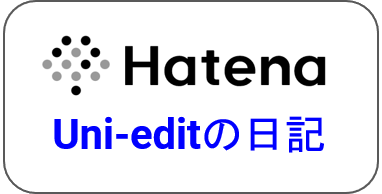難易度:中級
学術論文において、統計的な結果や、何かの重要性について論議する場合に、'significant'という言葉が用いられているのを何度も見ていることでしょう。それが、統計的に、または非統計的に用いられるかどうかにより、その意味が異なるということをご存知でしたか。
例えば、論文の「考察」の部分に次の文があるとしたらどこに問題があるのでしょうか。
(曖昧な例)Significant levels of bisphenol-A were detected in 47 of the 50 sites sampled (85.0%).
はっきりしているのは、一般的な意味では、'significant'は程度や大きさを示すために用いるということです。不確かであるのは、著者が度合の重要性または妥当性について言及しているか、あるいはむしろ統計的、量的解釈について言及しているがどうかです。
今回のヒントをわかりやすくし、一般的な例を区別するために、'significant'を統計的(statistical)用法と非統計的(non-statistical)用法の2つに分けることにしましょう。
統計的用法
統計的な意味では、'significant'は通常、ある変数が帰無仮説またはベースラインの測定値とp値(通常は、p < 0.05)に基づいていかに異なるかを示す、「結果」の部分で用いられます。
試験群と対照群の間に統計的有意差があると、帰無仮説は棄却されます。
これは、2群間の量的差異が2群の比較分析の統計基準を満たすほど十分大きかったことを意味します。
ところで、副詞の'significantly'に形容詞を続けると、多くの場合に効果的で自然な表現になるので、読者は測定軸を直観的に理解します。
(容認される例)There was a statistically significant difference between the time taken by our nutrient extraction method to extract 1 kg of oleic acid and that taken by the leading conventional method (Robinson et al., 2015) (6.3±1.2 h vs. 8.0±0.5 h; p=0.032).
(訳)オレイン酸1kgを抽出するためにかかる時間は、我々の栄養成分抽出方法と従来の主要な抽出方法(Robinsonら、2015)との間に統計的有意差があった(6.3±1.2時間対8.0±0.5時間、p=0.032)。
(より良い例)Our nutrient extraction method extracted 1 kg of oleic acid significantly faster than the leading conventional method (Robinson et al., 2015) (6.3±1.2 h vs. 8.0±0.5 h; p=032).
(訳)オレイン酸1kgを抽出した我々の栄養成分抽出方法は、従来の主要な抽出方法(Robinsonら、2015)より有意に早かった(6.3±1.2時間対8.0±0.5時間、p=0.032)。
非統計的用法
非統計学的な意味では、一般的には、'significant'は何かの重要性や妥当性を表すのに用いられます。
Iron ore is a significant export contributing to Australia's economy.
これは、次のように言い換えることができます。
Iron is an important export contributing to Australia's economy.
(訳)鉄は、オーストラリアの経済に寄与する重要な輸出品である。
Our finding that rice paddy runoff reduces salinity of adjacent lagoons bears significance on India's aquacultural policy.
これは、次のように言い換えることができます。
Our finding that rice paddy runoff reduces the salinity of adjacent lagoons has relevance to India’s aquacultural policy.
(訳)水田の表面流水が隣接した潟の塩分を減らすという我々の発見は、インドの水産養殖計画と関連する(妥当性を有する)。
ここでの'significant'の意味は一般的な意味です。例えば、最初の文は、(我々はオーストラリアの輸出の全てを分析し、その統計的結果より鉄の輸出量が別の輸出量よりも多かったと確信する)という意味ではありません。この文は単に、オーストラリアが大量の鉄を輸出することを意味します(オーストラリアは大量の小麦や羊毛も輸出していますが、それはここでは重要ではありません)。
曖昧さをなくす-例1
(曖昧な例)Significant levels of bisphenol-A were detected in 47 of the 50 sites sampled (85.0%).
著者は、その濃度が標準またはベースラインの測定値よりも有意に高かったと言っていますか。それとも、これらの結果が重要である(そしてそれゆえに懸念される)と言っているのでしょうか。たとえいずれの意味で用いられたとしても、この文は大きな修正を必要とします。
1.) 言葉どおりに解釈すると、読者はビスフェノールAを良いものとみなし、それが低濃度であることが不安材料であると判断します。
2.) 比較の対象がないので、何の濃度より高い(または低い)のかわかりません。
重要性:The high levels of bisphenol-A detected in 47 of the 50 sites samples (85.0%) are cause for concern.
(訳)50箇所中47箇所(85.0%)のサンプルで検出された高濃度のビスフェノールAが不安材料である。
統計的有意性:Levels of bisphenol-A significantly higher (p<0.001) than the amount EPA guidelines consider safe were detected in 47 of the 50 sites sampled (85.0%).
(訳)EPAガイドラインが安全であるとみなす濃度より有意に高い(p < 0.001)濃度のビスフェノールAがサンプリングされた50箇所中47箇所(85.0%)で検出された。
曖昧さをなくす-例2
(曖昧な例)Our results agree with the significant findings of Kang et al. (2006), who found that β-carotene production was more efficient in 5% kerosene-supplemented media than in non-supplemented media.
著者は、Kangらの知見が統計的に有意だったと言っているでしょうか。この有意性は、5%灯油の補足培地と非補足培地を明確に比較することによって、間違いなく示唆されます。あるいは、著者はKangらの知見が重要で画期的であると言っているのでしょうか。言葉どおりにはこのように解釈されます。
著者は多分、両方を意味しています。Kangらの知見が統計的に有意であり、画期的であるならば、この用法は受け入れられます。しかし、正当化するならば(例えば、Kangらの知見が特に新規ではない場合)、その単語をこれらの用法の1つに限定することができます。
重要性:Our results agree with the major findings of Kang et al. (2006), who found that β-carotene production was more efficient in 5% kerosene-supplemented media than in non-supplemented media.
(訳)我々の結果はKangらの重大な知見(2006)と一致する。Kangらは、βカロチンが5%灯油の補足培地中のほうが非補足培地中より効率的に産生されることを見出した。
統計的有意性:Our results agree with the findings of Kang et al. (2006), who found that β-carotene production was significantly more efficient in 5% kerosene-supplemented media than in non-supplemented media (F4,15 = 25.6, P < 0.001).
(訳)我々の結果はKangらの知見(2006)と一致する。Kangらは、βカロチンが5%灯油の補足培地中のほうが非補足培地中より有意に効率的に産生されることを見出した(F4,15 = 25.6、P < 0.001)。
結論
上記の例から、覚えておいていただきたいことは、以下のとおりです:
1.) ‘significant’ は、量、重要性、妥当性を評価するために用います。
2.) その用法は便宜上、統計的と非統計的とに分けることができます。
Download Tip Here:  How to significantly improve your usage of the term 'significantly'
How to significantly improve your usage of the term 'significantly'
Uni-edit English Writing Tip 011: How to significantly improve your usage of the term ‘significant’
Difficulty: Intermediate
How many times have you seen the word ‘significant’ used in a scientific paper either with statistical results or to discuss the importance of something? Did you know its meaning is different depending on if it is used in a statistical or non-statistical sense?
For example, what’s wrong with this sentence from a paper’s Discussion section?
Significant levels of bisphenol-A were detected in 47 of the 50 sites sampled (85.0%).
What is clear is that ‘significant’ is used in a general sense, to indicate degree or extent. What is unclear is whether the author is referring to the levels’ importance or relevance, or instead to a statistical, quantitative interpretation.
To make this writing tip easy to follow and distinguish common examples, we divide ‘significant’ into two categories: ‘statistical’ and ‘non-statistical’.
Statistical Usage
In its statistical sense, ‘significant’ is commonly used in the Results section to indicate how much a variable differs from a null hypothesis or baseline measurement based on the P-value, usually P<0.05.
There was a statistically significant difference between the experiment and control groups (P<0.05), leading us to reject our null hypothesis.
This means the quantitative difference between the two groups was large enough to satisfy the statistical criteria of the analysis comparing the two groups.
By the way, it is often more effective and natural to combine the adverb form ‘significantly’ with an adjective, so that readers intuitively understand the axis of measurement.
Okay: There was a statistically significant difference between the time taken by our nutrient extraction method to extract 1 kg of oleic acid and that taken by the leading conventional method (Robinson et al., 2015) (6.3±1.2 h vs. 8.0±0.5 h; p=0.032).
Better: Our nutrient extraction method extracted 1 kg of oleic acid significantly faster than the leading conventional method (Robinson et al., 2015) (6.3±1.2 h vs. 8.0±0.5 h; p=0.032).
Non-statistical Usage
In its non-statistical sense, ‘significant’ is commonly used to express the importance or relevance of something, generally speaking.
Iron ore is a significant export contributing to Australia’s economy.
This could be rephrased to: Iron is an important export contributing to Australia’s economy.
Our finding that rice paddy runoff reduces salinity of adjacent lagoons bears significance on India’s aquacultural policy.
This could be rephrased to: Our finding that rice paddy runoff reduces the salinity of adjacent lagoons has relevance to India’s aquacultural policy.
The meanings here are general. For example, the first sentence does not mean that all of Australia’s exports were analyzed, and our statistical results give us confidence that the quantity of iron was greater than another export. It just means Australia exports a lot of iron (it also exports a lot of wheat and wool, but that’s not relevant here).
Resolving ambiguity - Example 1
Significant levels of bisphenol-A were detected in 47 of the 50 sites sampled (85.0%).
Does the author mean that the levels were significantly higher with respect to a standard or baseline measurement? Or that these results were important (and thus cause for concern)? This sentence requires major revision, even if both usages were intended:
1.) Based on the grammar alone, a reader is justified in assuming bisphenol-A is good, and that low levels are cause for concern.
2.) There is no object of comparison: what are the levels higher (or lower) than?
Important: The high levels of bisphenol-A detected in 47 of the 50 sites samples (85.0%) are cause for concern.
Statistically significant: Levels of bisphenol-A significantly higher (p<0.001) than the amount EPA guidelines consider safe were detected in 47 of the 50 sites sampled (85.0%).
Resolving ambiguity - Example 2
Our results agree with the significant findings of Kang et al. (2006), who found that β-carotene production was more efficient in 5% kerosene-supplemented media than in non-supplemented media.
Does the author mean that the Kang et al.’s findings were statistically significant? This is certainly suggested by the explicit comparison of ‘5% kerosene-supplemented media’ and ‘non-supplemented media’. Or does the author mean Kang et al.’s findings were important and ground-breaking? The grammar suggests this interpretation.
The author likely means both! If Kang et al.’s findings were both statistically significant and ground-breaking, this usage is acceptable. However, we can limit the word to one of these usages if warranted (e.g., if Kang et al.’s findings were not particularly novel).
Important: Our results agree with the major findings of Kang et al. (2006), who found that β-carotene production was more efficient in 5% kerosene-supplemented media than in non-supplemented media.
Statistically significant: Our results agree with the findings of Kang et al. (2006), who found that β-carotene production was significantly more efficient in 5% kerosene-supplemented media than in non-supplemented media (F4,15 = 25.6, P < 0.001).
Conclusion
The take-home messages from the above examples are:
1.) Significance is used to measure quantity, importance, and relevance; and
2.) Its usages can be conveniently categorized as ‘statistical’ and ‘non-statistical’.



